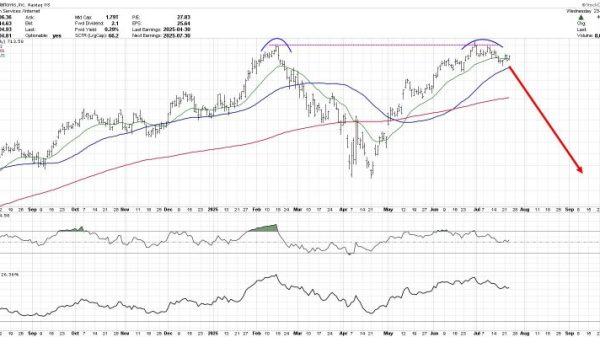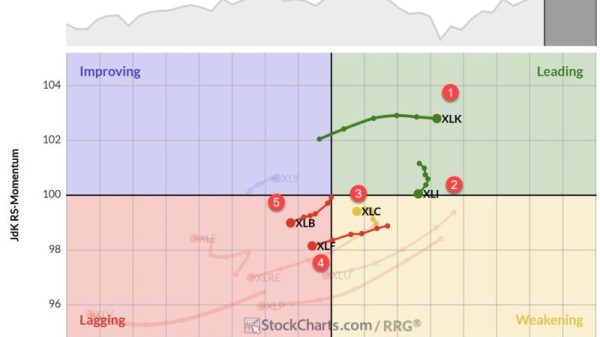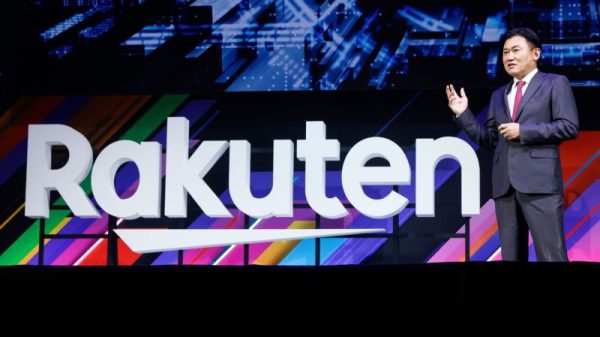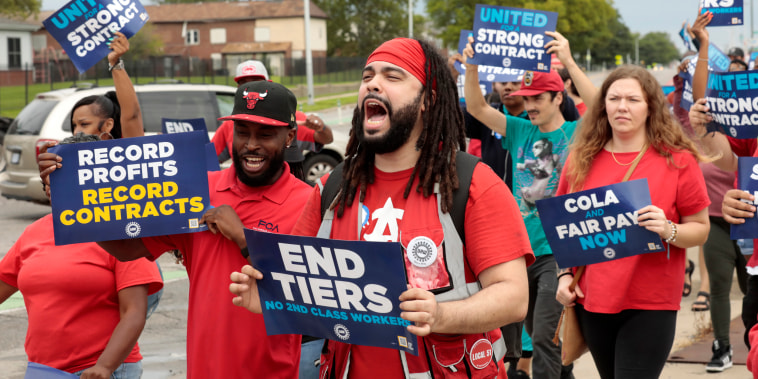DETROIT — United Auto Workers members overwhelmingly granted union leaders authorization to strike during ongoing contract negotiations with General Motors, Ford Motor and Stellantis, if warranted.
The union on Friday said an average of 97% of combined members at the automakers approved the action, however final votes are still being tallied. That’s in line with support during negotiations four years ago, when 96% of workers who voted supported authorization for a strike.
The “strike authorization vote” is part of the union’s constitution and viewed as a procedural step in the negotiations. The voting results are historically high in support of the authorization. The vote does not mean there will or will not be a strike.
However, UAW President Shawn Fain has been far more vocal than past union leaders about its ability to use striking as a weapon in its arsenal against the companies during the negotiations.
“The Big Three is our strike target. And whether or not there’s a strike — it’s up to Ford, General Motors and Stellantis, because they know what our priorities are. We’ve been clear,” Fain has said.
Those priorities are far richer than during prior contract negotiations between the two sides. The union’s demands include a 46% wage increase, restoration of traditional pensions, cost-of-living increases, reducing the workweek to 32 hours from 40 and increasing retiree benefits.
United Automobile Workers President Shawn Fain speaks as members and their supporters gather at the UAW Region 1 office in Warren, Mich., on Aug. 20.Jeff Kowalsky / AFP – Getty Images
The UAW said 98% of hourly workers and 99% of salaried workers at Ford voted in favor of the strike authorization. GM passed by 96%, while the action was approved at Stellantis by 95%. Voter turnout and how many votes still needed to be counted was not immediately available.
Strikes could take various forms, including a national strike, where all workers under the contract cease working, or targeted work stoppages at certain plants over local contract issues. A strike against all three automakers, as Fain has alluded to, would be the most impactful but also the riskiest and most costly for the union.
The UAW has more than $825 million in its strike fund, which it uses to pay eligible members who are on strike. The strike pay is $500 per week for each member — up from $275 per week last year.
Assuming 150,000 or so UAW members covered by the contracts, strike pay would cost the union about $75 million per week. A fund of $825 million, then, would cover about 11 weeks. One caveat: that doesn’t include health-care costs that the union would cover, such as temporary COBRA plans, that would likely drain the fund far more quickly.
National or targeted strikes at any of the automakers could be detrimental to business. A 40-day strike against GM during the last round of negotiations in 2019 led to a production loss of 300,000 vehicles, the company said at the time. It also cost the automaker $3.6 billion in earnings, GM said.
More from CNBC:
Fed Chair Powell calls inflation ‘too high’ and warns that ‘we are prepared to raise rates further’A psychology expert shares 5 toxic phrases ‘highly selfish, entitled’ people always use—and how to deal with themThe 15 U.S. cities with the highest cost of living—San Francisco isn’t No. 1





























